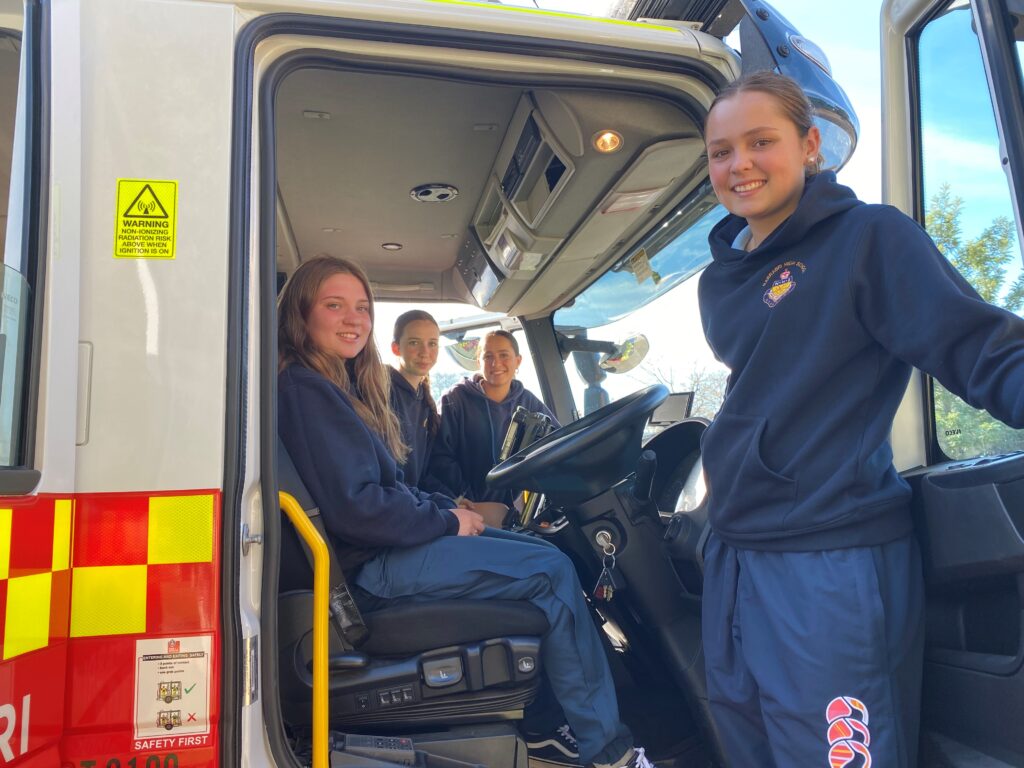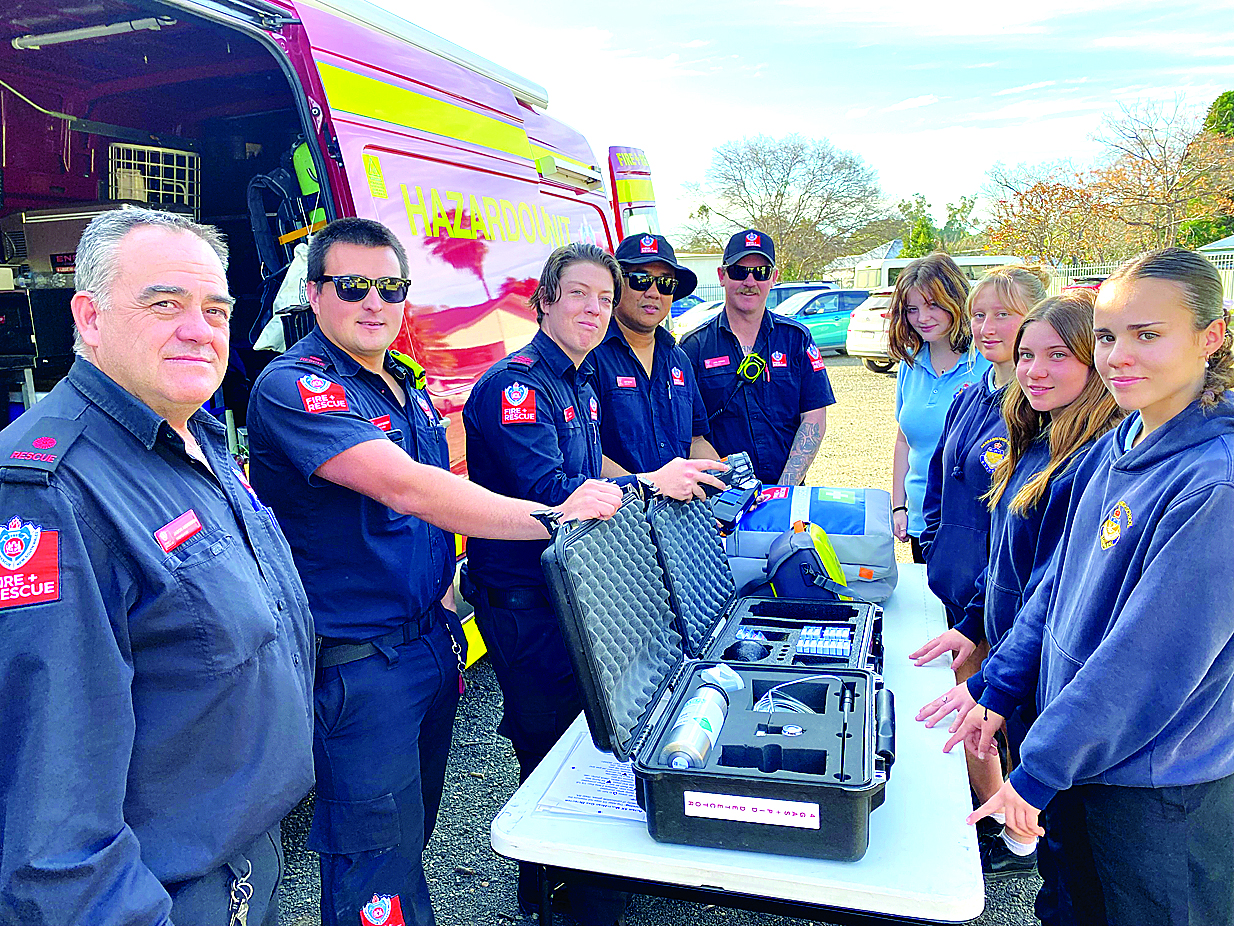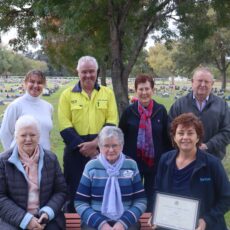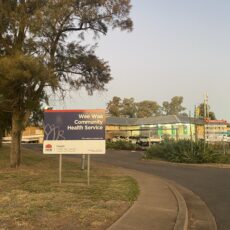Narrabri High School has launched a major initiative designed to give students a taste of possible career pathways in the health industry.
The Careers Health Immersion Program (CHIP), is a major new program developed wholly by staff at Narrabri High School in response to the latest educational studies, research conducted by Narrabri Shire Council, and feedback from the Narrabri Industrial Network and local employers, to better meet the needs of students and the local community.
Each week students will experience first hand just what is involved in a range of careers, with the full support and co-operation of local businesses and agencies.
CHIP will run on one afternoon a week for 10 weeks and will entail a combination of interactive workshops and workplace visits that will include a wide range of local and regional health agencies.
The program kicked off with an interactive workshop conducted by representatives from the University of New England Faculty of Nursing, Narrabri District Hospital, and the Whiddon Group.
This was followed by hands-on activities at the hospital, Whiddon and Jessie Hunt nursing homes, Healthwise, Gwydir Physiotherapy, Centrecare and the Gunnedah Mines and Rescue Service with additional presentations by the Aboriginal Health Services and the Hunter New England Allied Health Education Unit.

Narrabri High student Josie Harvey learns about blood pressure testing with Community Health clinical nurse educator Maxine Ambrose.
Students will also be given the opportunity to participate in first aid training while undergoing the program.
“Health was chosen as a focus area due to the record number of students this year who have applied for Hunter New England Area Health Service school-based nursing traineeships and the on-going shortage of nurses both generally and in aged care in particular,” said deputy principal programs at Narrabri High, Emily McInerney.
Work has already begun on introducing a different careers-based program, similar to CHIP, every term each year.
The school is planning an agriculture/primary industries program for Term 4 this year and is looking at the possibility of another in the creative and performing arts field for
inclusion next year.
It is believed that these programs are the first of their type in any school setting.
The aim, along with other initiatives within the school, is to provide a range of opportunities for students to explore their individual career interests and options.
Last term the science faculty began implementing the Careers Immersion Program with Years 7 and 8, in which students visited various workplaces with ties to the junior science syllabus and career opportunities in science-related fields.
“A number of studies show that when young people under the age of 15 are exposed to workplaces, they achieve significantly better life outcomes, both educationally and career-wise,”Mrs McInerney said.
“These programs are only components of a far wider reaching career education focus at Narrabri High to personalise pathways for students.
“To give an idea of the scale of the commitment, every faculty in the school is now engaged in embedding specific, reportable careers outcomes in its teaching throughout the curriculum.
“This will be for every subject, for every year group, and will take a united, integrated approach based on the Australian Careers Blueprint.
“Programs such as CHIP cannot operate without strong community support,” said Mrs McInerney.
“We are very lucky to have people in Narrabri and surrounding areas who are so generous with their time for the CHIP program to benefit our students and look forward to connecting with other key stakeholders in the future.”

Checking out the cabin of a NSW Fire and Rescue vehicle, Narrabri High School Year 10 students Brielle Bourke, Josie Harvey, Hattie Capp and Mabel Tucker.
In the first CHIP health careers event, following talks from health and allied services representatives in the school’s Living Room, fourteen Narrabri High School Year 10 students were introduced to the world of emergency services – NSW Fire and Rescue and Hazmat – recently.
Gunnedah-based Fire and Rescue captain David Welch visited the school to outline the roles and responsibilities of firefighters, supported by Narrabri firefighters who brought a Hazmat vehicle and fire tender to the school to demonstrate the high tech capabilities of modern emergency responders and their role in emergency health services.
The aim of the day was to explain to students what was involved in fire and rescue and hazardous materials situations and to let them see what could lie ahead on a career path in the emergency services.
The program will see students introduced to health and allied careers with the co-operation of a range of partners who will show them the wide range of career options.
Partner organisations will include businesses and entities as diverse as the hospital, aged care, mines rescue, disability services, Aboriginal health and more.
Students who engage with the program will visit district sites and see others through Virtual Reality goggles.
There is much to know and the first day of the health careers program was met with keen interest from the students.
The range of equipment aboard the Fire and Rescue and Hazmat vehicles illustrated the challenges which modern day personnel are called on, and equipped, to face.
And the requirements to work in those services – dealing with medical emergencies, physical fitness, capability of handling dangerous situations, the skills and training needed, and individuals’ suitability for the roles were covered by Captain Welch in a talk in the school’s Living Room and hands-on with the vehicles in co-operation with local ‘firies’. Capt Welch thanked Narrabri Station Commander Shane Bradford for supporting the school event with equipment and personnel.
To order photos from this page click here










